The true currency of power…is storytelling.
Not money.
Not fear.
Not love.
But story.
It’s the story people tell themselves about what they can do, or who they can become with more money, more love, or less fear that actually moves them to action.
It’s the best storytellers that ultimately have the most power in this world. Concepts like money, fear, and love are just some of the storytelling tools they use.
Whatever you do in life, you need to be telling a story (and a damn good one) if you want power.
Fortunately, renowned American novelist, Kurt Vonnegut, has given the world his 8 Shapes of Stories.
Kurt believes that these 8 frameworks capture the essence of every successful story humans have ever and will ever tell.
✳️ If you want to establish clarity, power, and influence within your stories and marketing, bookmark this article and come back to it often.
The 8 Shapes of Stories
Vonnegut plots the shapes of stories on two axes:
- Good Fortune & Bad Fortune on the Y-Axis
- Beginning & Ending on the X-Axis
And a line representing the story arc ties it all together.
1. Man In Hole
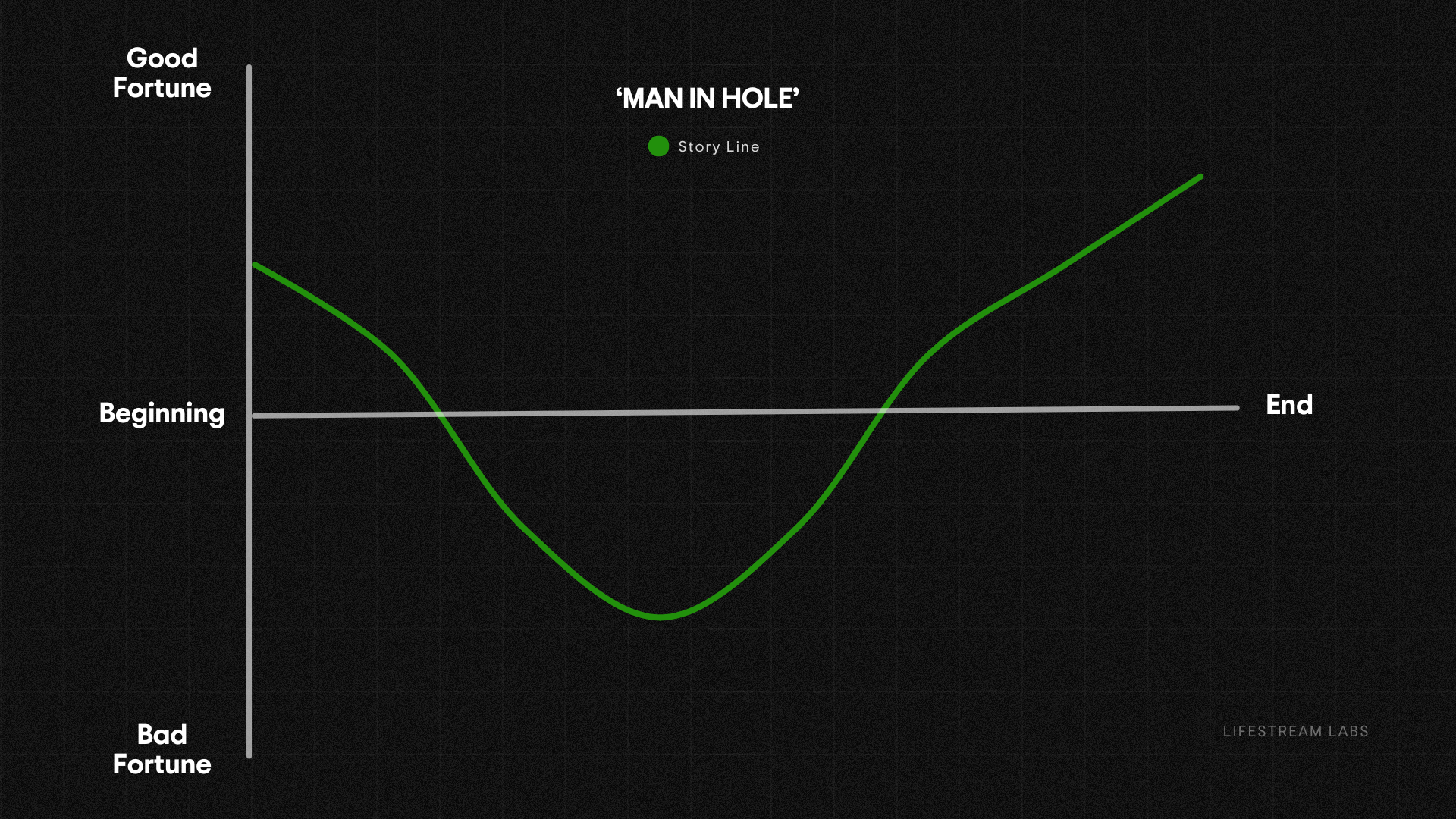
Concept: Protagonist has a good life → gets into a difficult situation → overcomes it → has a better life
Case Study: Iron Man 1
2. From Bad to Worse
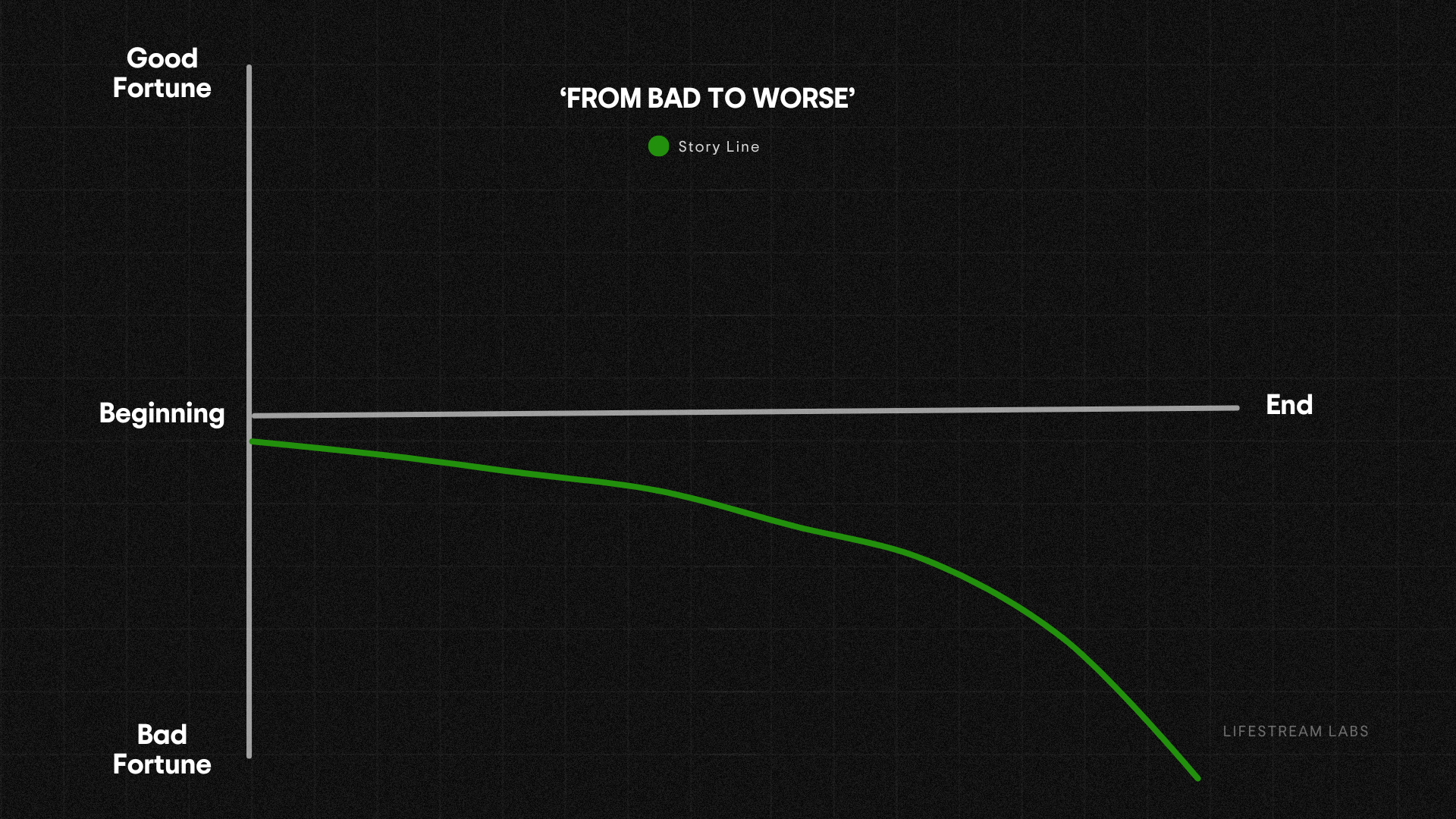
Concept: Protagonist’s life is already not so great → more hardship comes → has an even worse life
Case Study: Breaking Bad Series
3. Cinderella / Rags to Riches
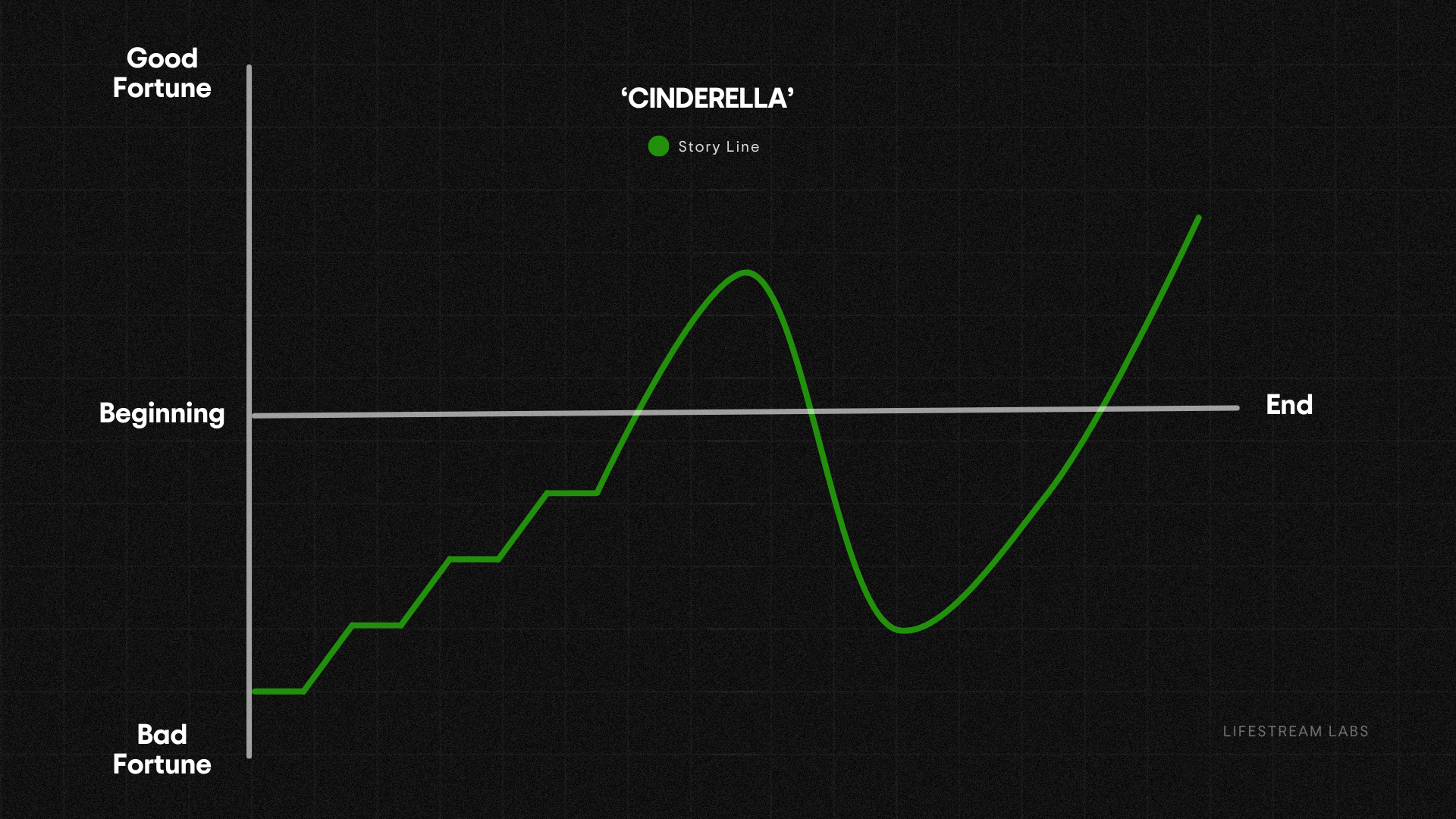
Concept: Protagonist is deep in misfortune → life steadily improves → tragedy strikes → overcomes it → has a better life
Case Study: Pursuit of Happyness
4. Boy Meets Girl
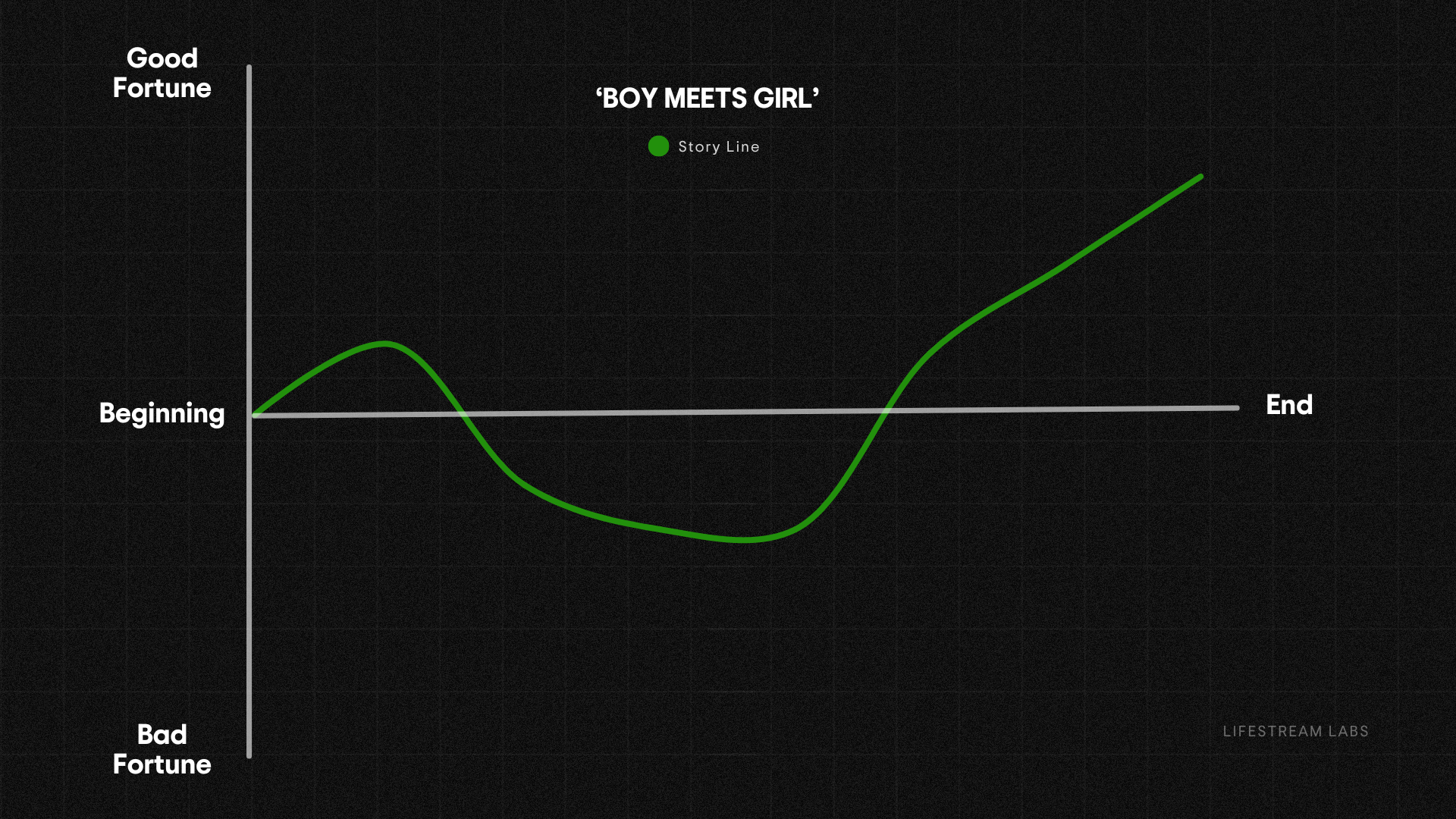
Concept: Protagonist has a breakthrough or discovery that improves their life → ends up losing or ruining it → finds a way to get it back → has a better life
Case Study: The Notebook
5. Which Way is Up
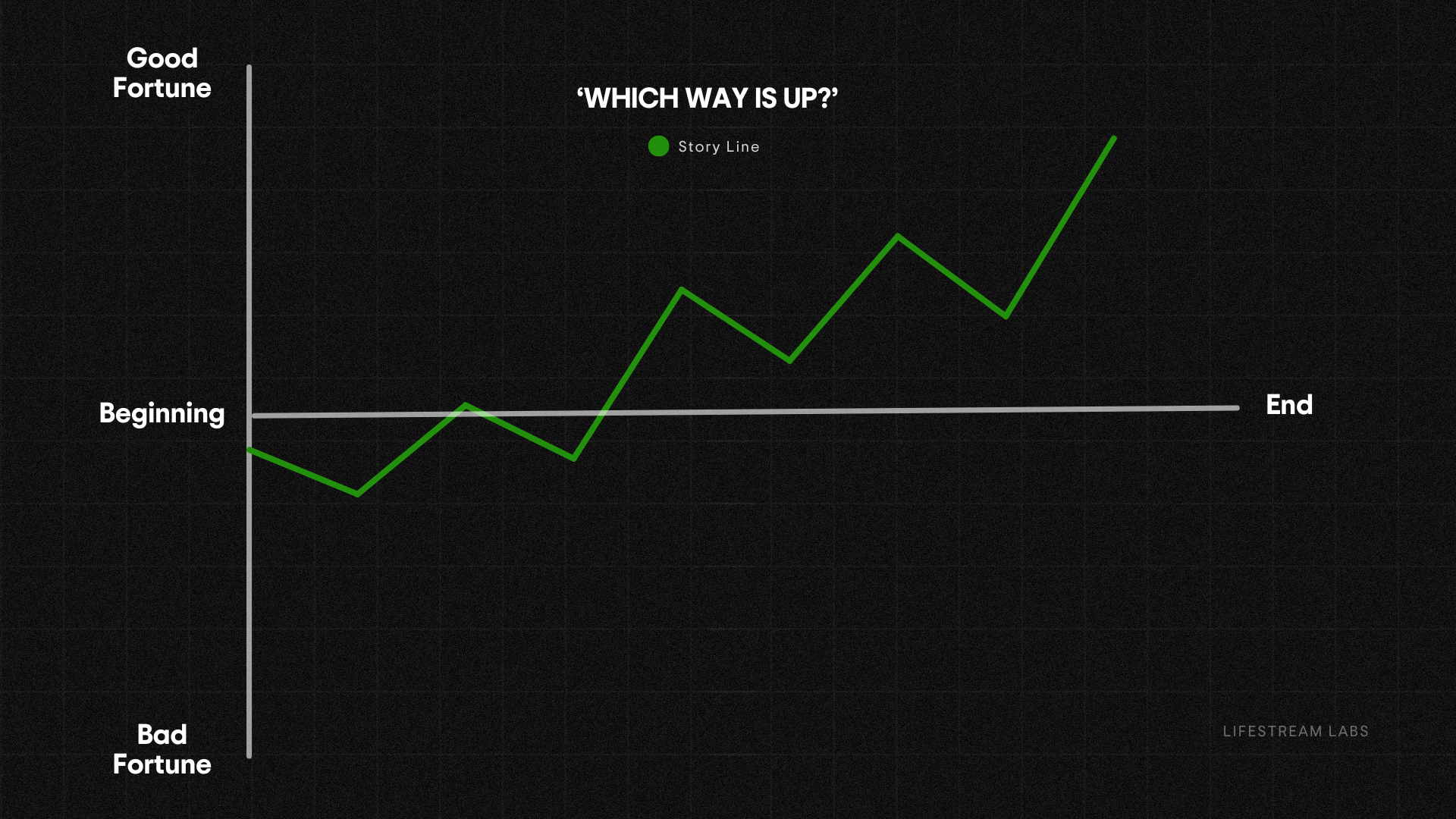
Concept: Protagonist experiences a series of ups and downs in life that ultimately has an upward trajectory
Case Study: The Alchemist
6. Creation Story
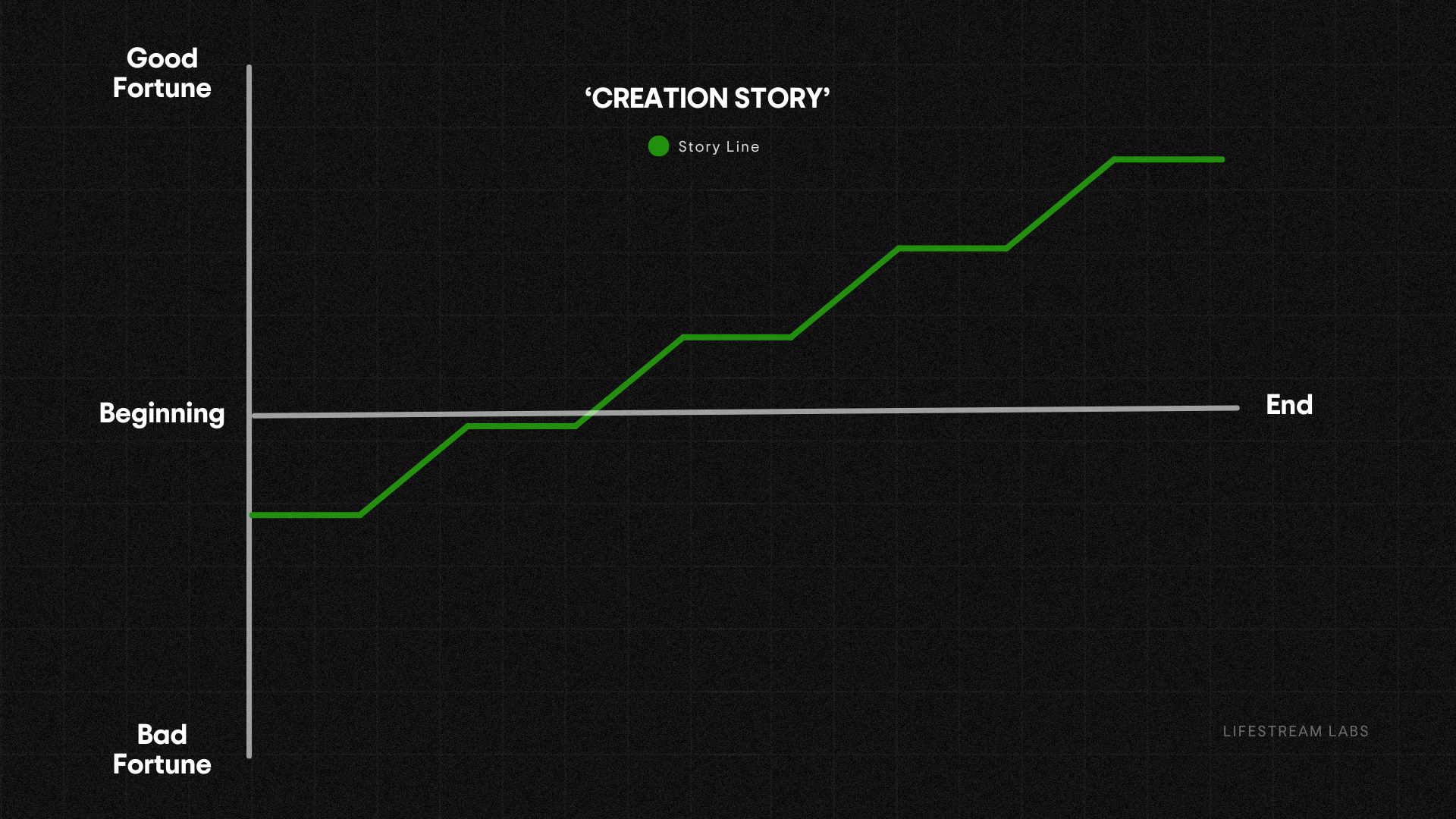
Concept: Protagonist begins in turmoil → life steadily improves and ultimately results in a happy ending
Case Study: Hidden Figures
7. Old Testament
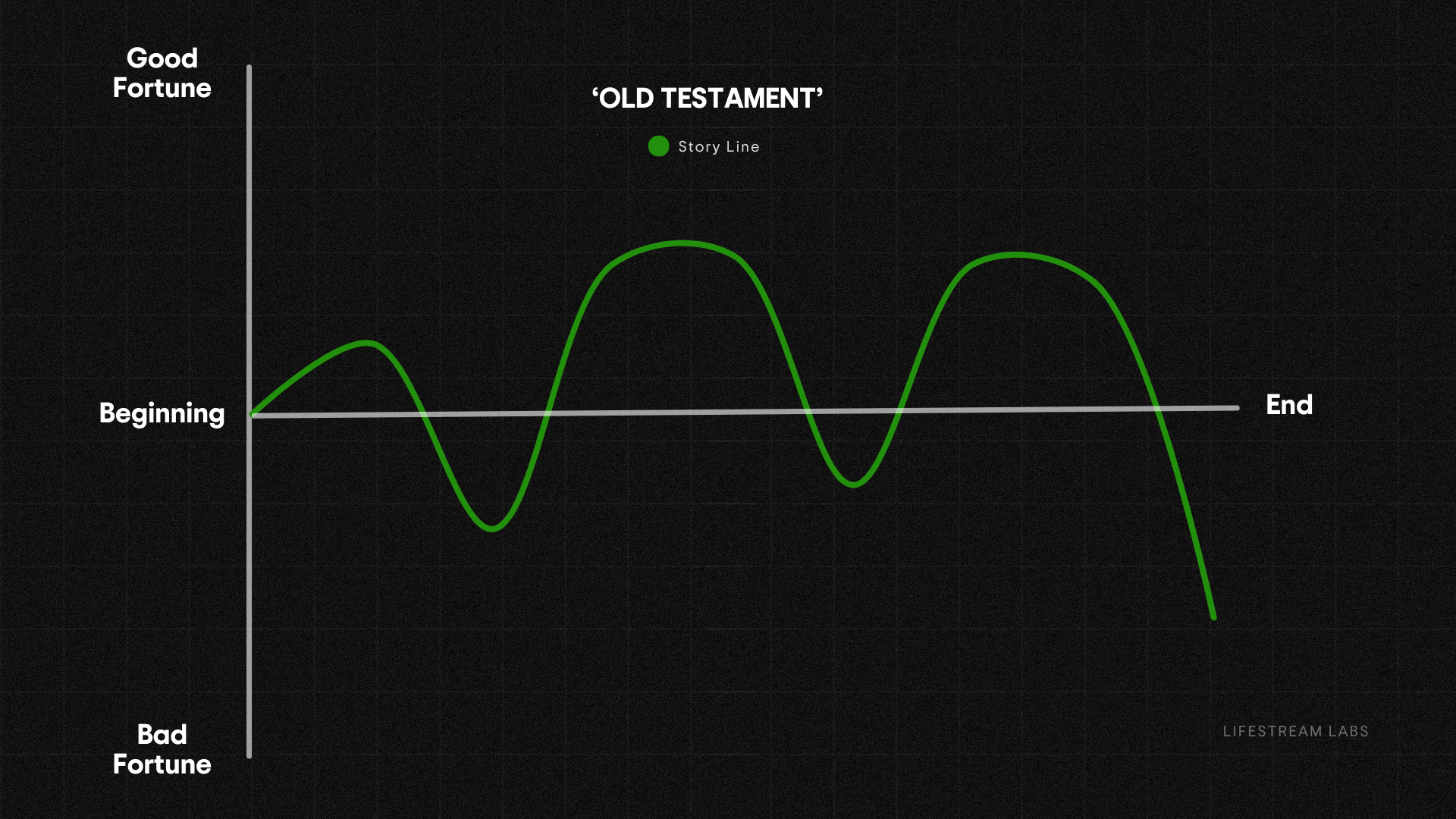
Concept: Protagonist experiences a series of gradual ups and downs that seem to keep them at a plateau in life → tragedy strikes → life ends up worse
Case Study: 1984
8. New Testament
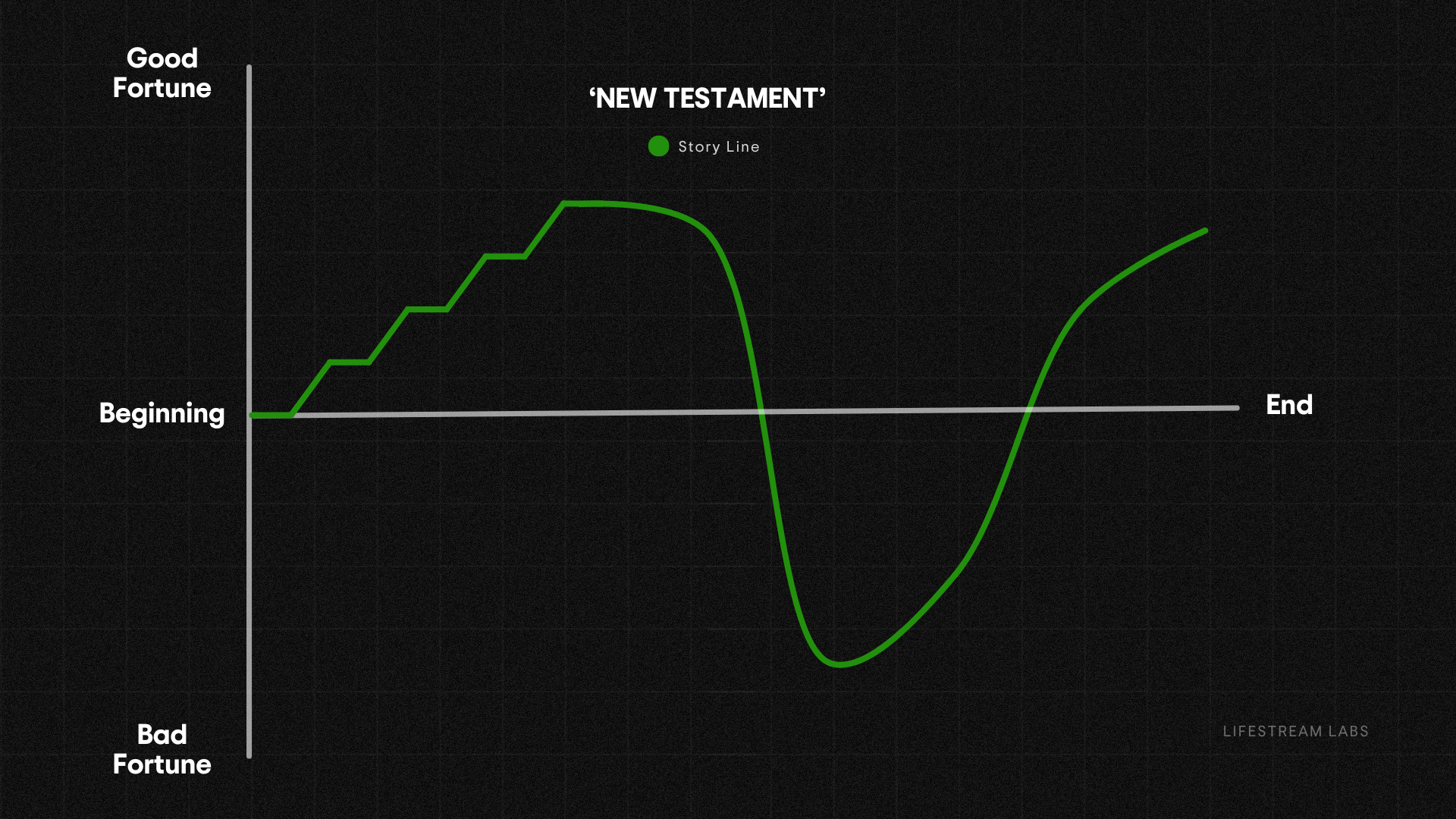
Concept: Protagonist has a constantly improving life → tragedy takes it all away → journey to overcome it → reclaims their joy and prosperity
Case Study: Creed
Why Do These Matter?
Now that you have these blueprints for storytelling, keep an eye out for them in movies, books, TV, marketing.
What you’ll notice is the stories that flop often don’t clearly follow a storyline as depicted above. They’re haphazard and fuzzy - causing confusion in the audience.
The stories that command power, however, are crystal clear in the journey protagonists (and the audience) are embarking on and what their expected outcome will be.
👏 The End
Thanks for reading!
By the way, here's Vonnegut's Shapes of Stories in his own words:
If you liked this, do me a quick 20 second favor and share this article with 2 of your friends who might need it for writing or marketing!
Get more by joining the newsletter if you haven’t already.
Author’s note:
In the 50’s Vonnegut submitted his Shapes of Stories as a thesis to his University, explaining that “There is no reason why the simple shapes of stories can’t be fed into computers.”
Although the University ultimately rejected the thesis, it does make me wonder…could these be fed into today’s AI systems like ChatGPT to help it write better stories (marketing and otherwise)?
I like to think so.
P.S. Full credit to Nathan Baugh who wrote this article first on his own blog. I loved his piece so much that I took what he did and added my own angle and flavor to it.





